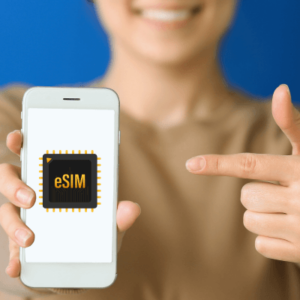Unlike physical SIM cards, eSIMs are embedded directly into devices, enabling users to switch carriers and manage plans without needing a physical card. This innovation is poised to redefine how consumers interact with their mobile devices, offering unprecedented convenience and control.
How Telecom Giants Are Embracing the eSIM Era
Major telecom companies worldwide are swiftly adapting to this new era. Recognizing the potential of eSIM technology, leading providers have begun integrating it into their services. By doing so, they aim to meet the growing demand for seamless connectivity and cater to tech-savvy consumers who crave the ease of switching networks or managing multiple profiles on a single device. This transition is not just about staying competitive; it’s about redefining the user experience in a digital-first world.

The Impact of the eSIM Era on Global Connectivity
The eSIM era is more than just a technological upgrade; it’s a catalyst for global connectivity. With eSIM, travelers can avoid exorbitant roaming charges by easily switching to local networks. Businesses benefit from more efficient logistics and fleet management, as devices can be remotely managed and updated. This technology is particularly impactful in regions with developing infrastructure, where eSIM can bridge connectivity gaps and foster digital inclusion.
Innovations Driving the eSIM Era Forward
Innovation is at the heart of the eSIM revolution. Telecom giants are investing heavily in research and development to enhance eSIM capabilities. Some companies are exploring dual eSIM technology, allowing users to maintain two active numbers simultaneously. Others are focusing on expanding eSIM compatibility across a broader range of devices, from smartphones to wearables and IoT devices. These advancements promise to deliver richer, more versatile connectivity options for consumers and businesses alike.
Key Partnerships in the eSIM Era: A Look at Strategic Alliances
To navigate the complexities of the eSIM landscape, telecom companies are forming strategic alliances with tech firms, device manufacturers, and other stakeholders. Collaborations with companies like Apple and Samsung have been pivotal, as these tech giants integrate eSIM functionality into their flagship devices. Such partnerships are crucial for developing standardized solutions that ensure seamless interoperability across different networks and devices.
Telecom Strategies to Thrive in the eSIM Era
Adapting to the eSIM era requires more than just technological upgrades; it demands strategic foresight. Telecom providers are reimagining their business models to leverage eSIM’s potential. This includes offering more flexible and personalized service plans, enhancing customer service through digital platforms, and prioritizing cybersecurity to protect consumer data. By focusing on these areas, companies can not only survive but thrive in a rapidly evolving market.
Challenges and Opportunities in the eSIM Era for Telecom Providers
While the eSIM era presents numerous opportunities, it also comes with its share of challenges. The shift from physical SIM cards to digital profiles requires significant investment in infrastructure and customer education. Providers must ensure that their networks can support increased data traffic and offer robust security measures to prevent unauthorized access. However, those who successfully navigate these challenges stand to gain a competitive edge and unlock new revenue streams.
The Future of Mobile Connectivity in the eSIM Era
The future of mobile connectivity looks promising as the eSIM era gains momentum. We are likely to see more devices equipped with eSIM functionality, from smartphones to smartwatches, and even vehicles. This will lead to a more interconnected world, where users can effortlessly manage their digital lives across multiple devices. As this technology matures, it will pave the way for more innovative solutions, such as seamless integration with smart home systems and smart city infrastructure.

Consumer Benefits in the eSIM Era: What to Expect
For consumers, the eSIM era promises a host of benefits. The ability to switch carriers without changing SIM cards means more choice and flexibility. Consumers can take advantage of competitive pricing and tailored plans that suit their specific needs. Additionally, the convenience of managing multiple lines on a single device simplifies connectivity for both personal and professional use. The eSIM era empowers consumers to take control of their mobile experience like never before.
How the eSIM Era is Redefining Telecom Business Models
The rise of eSIM technology is prompting telecom providers to rethink their traditional business models. In an era where physical infrastructure is less of a barrier, companies are focusing on delivering value-added services. This includes bundling connectivity with entertainment, cloud storage, and other digital services to create comprehensive packages that appeal to a diverse customer base. By embracing these changes, telecom giants can remain relevant and competitive in a digital-first world.
In conclusion, the eSIM era marks a transformative period for the telecommunications industry, presenting both challenges and opportunities. As telecom giants adapt to this new reality, consumers stand to benefit from enhanced connectivity, flexibility, and choice.
Discover the Future of Connectivity
Are you ready to experience the future of mobile connectivity? Click the link below to explore exciting eSIM options and find the perfect plan that suits your lifestyle. Embrace the eSIM era and unlock a world of possibilities today!



